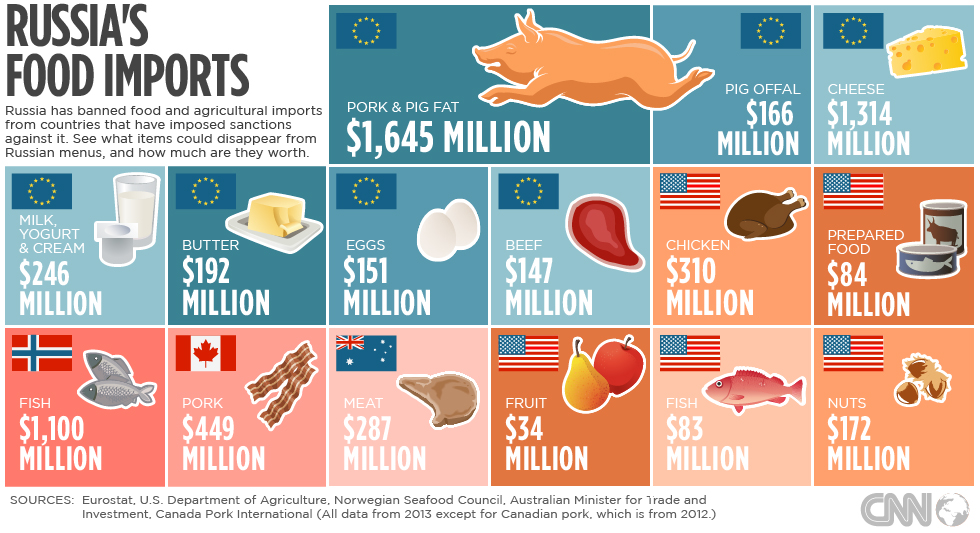The Russian ban on the import of certain food products from the EU (and some other countries) has led to a chorus of appeals from member states and from farm groups for aid and compensation. The Russian ban has created an immediate problem in the fruit and vegetables sector, where the summer harvest for fruits is in full swing, there is a high dependence on the Russian market, and the produce is perishable with few immediate alternative outlets. But the overall scale of the problem needs to be kept in perspective. In this post, I present the data on the countries and products affected.… Read the rest
Russian WTO accession by end year?
An announcement last week by Karel de Gucht, the EU Trade Commissioner, that the EU and Russia had struck a deal on remaining outstanding bilateral issues in negotiating Russia’s accession to WTO membership raises the prospect that this economic giant could become a WTO member by the end of this year.
Russia and the WTO
Russia first made its application in 1993 so has been negotiating its accession now for 18 years, by far the longest of any accession process by a WTO applicant. This reflects in part the country’s economic size (it is the sixth largest economy in the world on a PPP basis).… Read the rest

